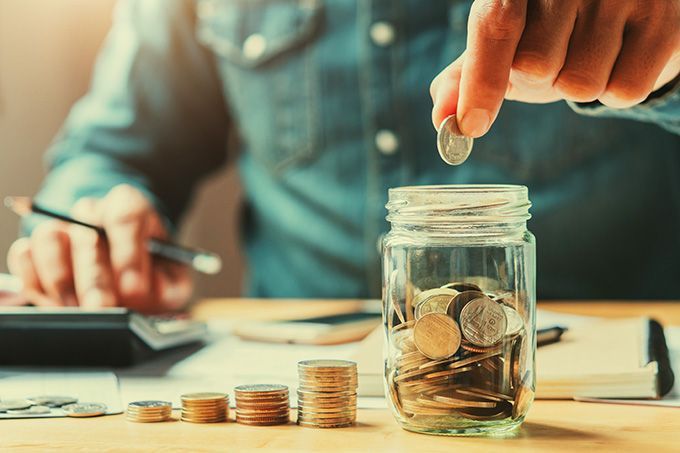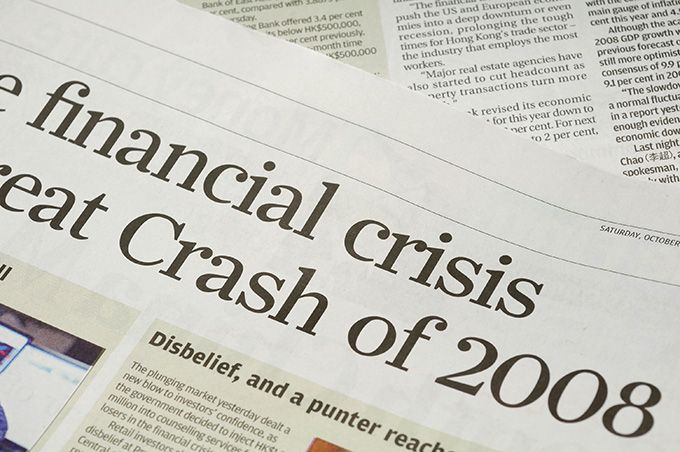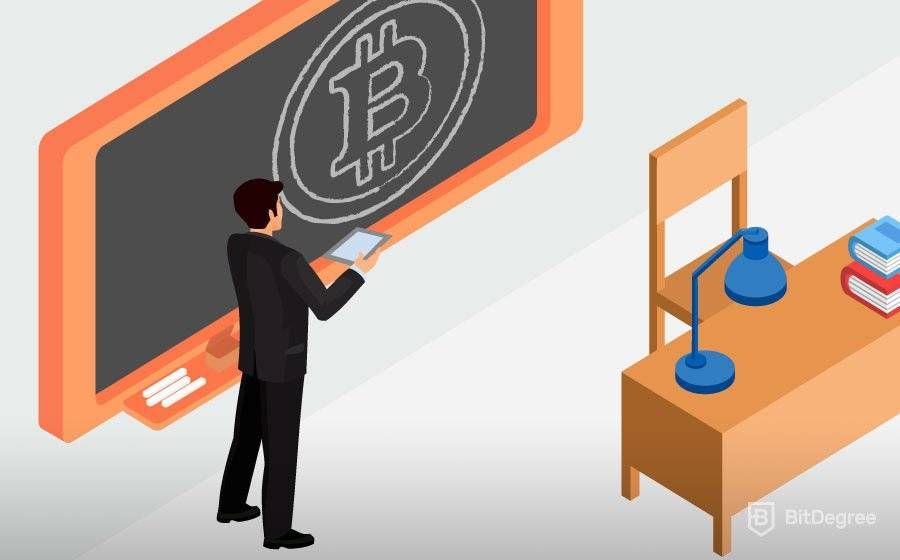Stop overpaying - start transferring money with Ogvio. Sign up, invite friends & grab Rewards now! 🎁
So, what is a cryptocurrency? Let's talk!
Back in 1990, people started asking “what is the Internet?”. Thirty short years later, it’s a question that no longer needs to be asked.
Thirty years from now, people won’t need to ask, “what is a cryptocurrency?”. It will be a normal part of their everyday lives, just like the internet is today. By the end of this guide, you won’t need to ask, either.
After reading this guide you will be able to answer, “what is a cryptocurrency?”, and many other questions, too. You’ll know why they were invented, what they are used for and why we will still be talking about them in 2046!
There’s no time to wait, so let’s get started!

Did you know?
Subscribe - We publish new crypto explainer videos every week!
What are dApps in Crypto? (Explained with Animations)


Table of Contents
- 1. What is a Cryptocurrency: The Definition
- 2. How Normal Money Works
- 3. How Does cryptocurrency do Things Differently?
- 4. The Story of Cryptocurrency
- 4.1. Silk Road
- 4.2. What Happened Next?
- 5. What is a Cryptocurrency When it’s Not Really a 'Currency'?
- 6. Are Cryptocurrencies a Good or a Bad Thing?
- 7. Conclusions - How Can Cryptocurrencies Change the World?
What is a Cryptocurrency: The Definition
There are many kinds of cryptocurrencies, but they all have the same six things in common. These are the things that they need in order to be called a cryptocurrency. Get ready for some big words!
Latest Deal Active Right Now:Cryptocurrencies are:
Digital: Cryptocurrency is digital money (or digital currency, it means the same thing). This means that it only exists in computers. Cryptocurrencies don’t have coins with a picture of a Queen’s head on them, or paper notes with ‘In God We Trust’ written on them, either.
Peer-to-Peer: Cryptocurrencies are passed from person to person online.
Global: There isn’t one cryptocurrency for Spain and another for China, for example. A cryptocurrency is the same in every country. They can be used freely between countries and across borders.
Encrypted: There are no rules about who can use cryptocurrency, and what they can use it for. Real names aren’t used for accounts. Each user is given codes instead. This is where we get the crypto part of the cryptocurrency definition. Crypto is Latin for "hidden". So, cryptocurrency translates as hidden money.
Decentralized: In the cryptocurrency world, there are no banks. Everyone is in charge of their own money, it isn’t kept in a bank. A bank is a center where lots of people keep their money. Cryptocurrencies are not managed by a central server, that’s why we say they are decentralized.
Not trust-demanding: The way cryptocurrencies are built means that you don’t have to trust anyone in the system in order for it to work.
It’s a very strange idea, isn’t it? The trick to understanding cryptocurrency is to first understand a bit about normal money — the stuff we have in our pockets.
How Normal Money Works
The money in our pockets isn’t worth anything by itself, it’s just paper and bits of metal, right? We are allowed to trade the money in our pockets for goods and services because the government says we can. This is called fiat money. US dollars, British pounds and Chinese yuan are all fiat currencies.
We know that when we go to the grocery store, we can trade the fiat money in our pockets for food. We know this because we trust what the government tells us.
When we have more fiat money than we can keep in our pockets, we open a bank account. To open a bank account, we must give the bank our personal information. When our money is in the bank, we can’t see it, but we know it’s there. So basically, we trust the bank.

Banks are an example of what we would call a trusted third-party system. Banks and governments are third-party companies that we trust. To make it clearer, let’s see an example.
Peter is hungry, and Paul wants his fence painted. Paul goes to the bank and takes out $10. Paul then pays Peter $10 to paint his fence. Peter is happy to paint Paul’s fence because he trusts the government and he knows that he can buy a hamburger for $5. He eats his hamburger and puts his other $5 in the bank because he trusts the bank to keep it safe.
The transaction above is only between Peter and Paul, but it needs them both to trust a third party for it to work.
How Does cryptocurrency do Things Differently?
Cryptocurrencies don’t need banks and governments. Users can send each other money online, without needing to trust each other or any third parties with their money or information.
Cryptocurrencies do this by recording every transaction (like the one above between Peter and Paul) on a shared database called a blockchain. This blockchain is shared across thousands of powerful computer systems called nodes.
Each new transaction is verified by a node. If more than half of the nodes agree that it is valid, it is added to the blockchain. Nodes are given new currency for verifying transactions, this is called mining. Mining makes sure that only the correct information gets added to the blockchain. Once transactions are added to it, they can’t be changed or deleted.

You don’t have to give your name, address, or date of birth when you use cryptocurrency. Your account has a public key and a private key. Think of it as being like your email account. Your public key is like your username and your private key is like your password. You need both to access your account.
Users are hidden, but transactions aren’t. Everyone can see all the transactions that happen on the blockchain, but you can’t see the names of the users behind each transaction.
Cryptocurrency for Newbies
Now, if a newbie (and we all know one!) asks you, “what is a cryptocurrency?”, tell them that it’s digital money that you can send to anyone on the planet without using a bank. They don’t need to provide any personal information to make a transaction, and transactions take place on a network they can trust.
The newbie might also want to know how cryptocurrencies got started. Not a problem! Keep reading and you’ll be able to answer that question, too!
The Story of Cryptocurrency
In the 1990s, lots of different people tried to build cryptocurrencies. The ones that came closest were DigiCash, HashCash and B-money. None of them got the technology quite right or the support they needed to succeed.
The story of cryptocurrency really gets started with Bitcoin. Bitcoin was the world’s first real cryptocurrency, and is still the most famous. Bitcoin’s creator is called Satoshi Nakamoto, but no-one knows who that is! No-one has ever met Satoshi in person. They could be a man, a woman or a whole group of people!
On January 12, 2009, Satoshi’s Bitcoin blockchain went online. The first trade of Bitcoin was for 10 BTC (Bitcoins). Satoshi sent it to a coder called Hal Finney.
Satoshi only ever spoke on internet message boards and in emails. By April 2011, Satoshi was gone. All that’s left of Satoshi Nakamoto is Bitcoin — and the name.

It took a couple of years for people to become interested in Bitcoin. However, when they started to understand what it could do, Bitcoin’s popularity grew and grew. People saw that Bitcoin had all six of those things we listed earlier, and they started buying it and using it.
So, what is a cryptocurrency like Bitcoin used for? Well… let’s talk about one of the websites where people first started using Bitcoin — which helped to make it famous!
Silk Road
Silk Road was an online black market. It was like an illegal Amazon or eBay. It used Bitcoin as its main trading currency. Customers could buy all sorts of things, using Bitcoin, without anyone knowing who they were. Many of these things were illegal, things like drugs, stolen goods, and weapons. Silk Road even had adverts for assassins!
Silk Road was shut down in 2013, after two years of trading. America’s FBI seized millions of dollars’ worth of Bitcoins, making it a very unlikely member of the cryptocurrency community!
The Silk Road story made it into newspapers across the world. This was both good and bad for Bitcoin. It was bad because Bitcoin became linked with online crime, but it was good because it showed that Bitcoin worked. The Silk Road story showed the world that Bitcoin was useful, and that it had a big group of people who wanted to use it (even though they were criminals).
What Happened Next?
When it went live in 2009, Bitcoin was worth zero dollars and zero cents. In April 2011, you could get 1 Bitcoin for $1. On December 17, 2017, Bitcoin had its best day so far. You could trade 1BTC for $20,052! Today, on August 7, 2023, you can trade 1BTC for $11,822. Not bad, right?
Cryptocurrency trading has become very popular. Hundreds of other cryptocurrencies have followed Bitcoin into the market, they are called altcoins.
Like Bitcoin, altcoins use blockchain technology, but they try to do things a little differently. Let’s have a look at the best of the rest;
- Litecoin is very similar to Bitcoin, but its system makes mining easier for users who don’t have powerful computers.
- Dogecoin is a fun-based altcoin with a Shiba Inu dog as its mascot. Fans of dogecoin often use it to support good causes, like wells in Kenya and the Jamaican Bobsled Team!
- BitcoinCash was created when a group of Bitcoin users disagreed with some of Bitcoin’s rules and broke away to form their own digital currency in 2017. A big disagreement like this is known as a hard fork.
Note: You can imagine a hard fork in a similar way to how a mobile phone update works. Some people choose to upgrade their phones, whereas some people don’t. It is still the same phone, however, it has different features.
Not everyone who uses blockchain technology is trying to create cryptocurrencies. Some people are trying to build blockchains that are bigger, better, and can do more. The most well-known example of this is Ethereum.
What is a Cryptocurrency When it’s Not Really a 'Currency'?
Ethereum’s creator Vitalik Buterin wanted to build a blockchain that was more advanced than Bitcoin’s. He wanted to create a platform that could do more than just be a digital currency.
Ethereum allows users to build dApps and set up smart contracts. Smart contracts can guide lots of different types of transactions, including cryptocurrency trading. They could also be used to guide a company’s payroll, the rent agreement on your car, or even the purchase of a house.
Note: dApps are like regular apps (like Facebook, Google or Twitter) but they run on a blockchain, not a central server. You can find out more about dApps in our "What is a dApp" guide.
Put it this way - if Bitcoin wants to replace your online banking app, then Ethereum wants to replace all of your other apps! Now, do you see what I mean?
The way Ethereum is using blockchain technology is seen by many people as the future of cryptocurrency. Ethereum is the next big thing!

To learn more about Bitcoin and Ethereum, see our Ethereum VS Bitcoin guide.
We now know how to answer quite a few questions;
- What is a cryptocurrency?
- When was cryptocurrency created?
- What are the main cryptocurrencies out there?
Now, let’s ask another very important question.
Are Cryptocurrencies a Good or a Bad Thing?
Good things about cryptocurrency (Yay!)
- It’s transparent: This means that everyone using a cryptocurrency blockchain can see every trade that’s ever been made. You don’t need to trust other users.
- Personal control: This means that every user is in charge of their own money, no-one but the user can get to it. It’s decentralized, remember? So, it’s different from giving the bank control of your money.
- It’s for everyone: Cryptocurrencies are open to every person on the planet. Banks have rules about who can have an account, crypto doesn’t. There are two billion people around the world that don’t have full access to bank accounts!
- It’s fast: A Bitcoin trade takes about an hour, although it can take as little as ten minutes. At most banks, an international bank to bank transfer can take 1-5 days.
- It’s safe: A cryptocurrency blockchain network is spread over thousands of computers, making them nearly impossible to hack.
Some bad things about cryptocurrency (Booo!)
- It can be unstable: Cryptocurrencies need to be more popular before everyone starts using them. Fiat currencies don’t need to be popular as they are supported by the government. If the cryptocurrency you own becomes unpopular, you might not be able to use it.
- If you lose it, it’s gone forever: If your cryptocurrency goes missing - or you lose your private key - you can’t get it back. You can’t telephone Bitcoin to complain. Remember, it’s not a bank.
- Criminals like it: If you’re a criminal then this probably isn’t a bad thing, but for the rest of us — it is! Cryptocurrency accounts are hidden, so people can use them for a crime. If people see that criminals and terrorists are using it, they might not want to use it themselves.
Before we finish our guide to cryptocurrency, let’s answer one more question.
Conclusions - How Can Cryptocurrencies Change the World?
In life, we must be very careful about who we trust. Most people only really trust their family and their friends. We wouldn’t give our personal information to a stranger in the street, because we don’t trust them. However, this is exactly what we do every time we open a bank account or pay for something online.
We might be able to trust banks, governments, and other third parties most of the time, but we can’t trust them all the time.
In 2008, the world economy crashed. Banks had used the money they had been trusted with very badly. The governments of the world were unable to stop millions of people from losing lots of money.
Something else was also happening in 2008 — Bitcoin was being created. Coincidence? I think not.
Cryptocurrencies remove the power that banks and governments have over our lives. They give the power back to us. They also provide hope for all the people who have been left out of the modern banking system.

Think of what cryptocurrencies could bring to countries like Afghanistan. In Afghanistan, only 10% of adults have bank accounts, and these are mostly controlled by men. What is a cryptocurrency to an Afghani woman? Freedom.
Syria, Yemen, and Libya are all in a state of civil war. Imagine being able to send aid to the people of these countries directly. What is a cryptocurrency to a Syrian? It’s a link to the rest of the world, to people who want to help.
And finally...
When we ask questions like “what is a cryptocurrency?”, we are really asking “what is a cryptocurrency going to do for me?”. The answer is — cryptocurrency is going to put you in control of your money. Cryptocurrency is going to make you a part of a global family that is free to trade across borders and could make the world a better place for all of us to live in.
What do you think? Are you interested in the world of crypto, and ready to hop on to an exchange and start trading?
The content published on this website is not aimed to give any kind of financial, investment, trading, or any other form of advice. BitDegree.org does not endorse or suggest you to buy, sell or hold any kind of cryptocurrency. Before making financial investment decisions, do consult your financial advisor.














